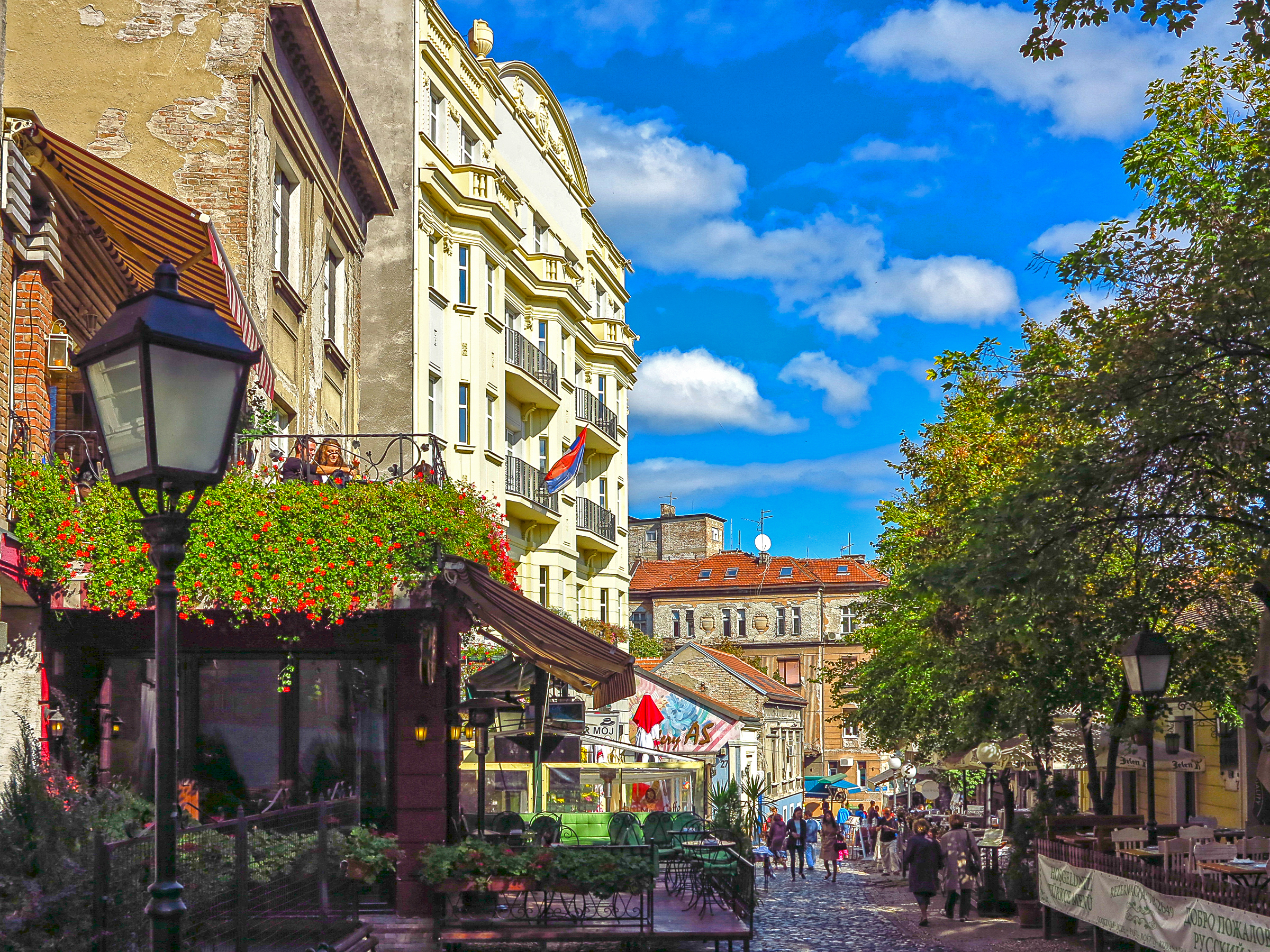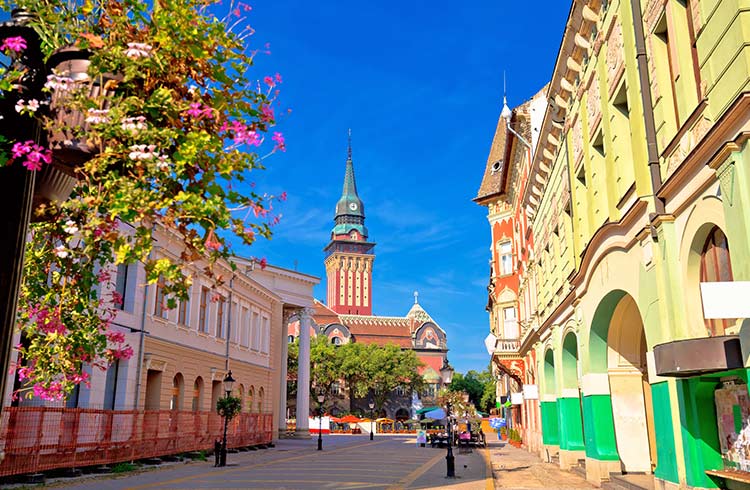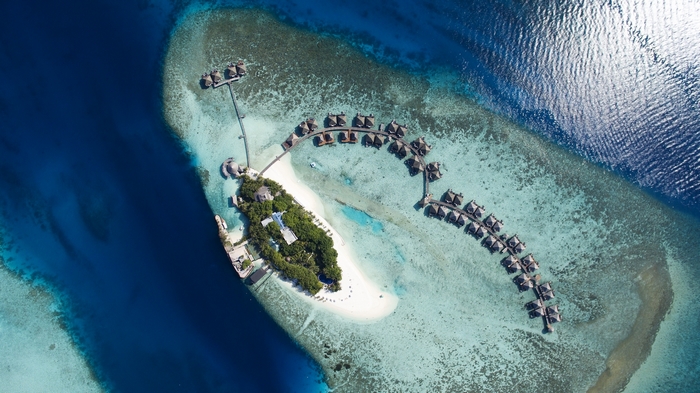- Information
- Tour Plan
- Location
- Gallery
- Reviews
- Similar Tours
What's included
- A guided tour of important places
- Accommodation in single twin share room
- Current Hotel Taxes and Service Charges
- Entrance tickets to monuments and museums
- Professionally guided tour
- Departure Taxes or Visa handling fees
- International Air, unless expressly paid for
- Medical insurance and emergency insurance
- Services not specifically stated in the itinerary
- Visa arrangements
Serbia, country in the west-central Balkans. For most of the 20th century, it was a part of Yugoslavia. The capital of Serbia is Belgrade (Beograd), a cosmopolitan city at the confluence of the Danube and Sava rivers; Stari Grad, Belgrade’s old town, is dominated by an ancient fortress called the Kalemegdan and includes well-preserved examples of medieval architecture and some of eastern Europe’s most-renowned restaurants. Serbia’s second city, Novi Sad, lies upstream on the Danube; a cultural and educational centre, it resembles the university towns of nearby Hungary in many respects. Beginning in the 1920s, Serbia was an integral part of Yugoslavia (meaning “Land of the South Slavs”), which included the modern countries of Serbia, Croatia, Slovenia, Bosnia and Herzegovina, Kosovo, North Macedonia, and Montenegro. Long ruled in turn by the Ottoman Empire and Austria-Hungary, these component nations combined in 1918 to form an independent federation known as the Kingdom of Serbs, Croats, and Slovenes. In 1929 that federation was formally constituted as Yugoslavia. Serbia was the dominant part in this multiethnic union, though after World War II the nonaligned communist government of Josip Broz Tito accorded some measure of autonomy to the constituent republics and attempted to balance contending interests by dividing national administrative responsibilities.

Land
Bounding the country to the west are the Republic of Bosnia and Herzegovina and the Slavonian region of the Republic of Croatia. Serbia adjoins Hungary to the north, Romania and Bulgaria to the east, North Macedonia to the south, and Montenegro to the southwest. Kosovo, which Serbia does not recognize as an independent country, lies to the south as well, along the northeastern border of Albania.

People of Serbia
Most of the population of Serbia and neighbouring Montenegro is of South Slavic origin. Slavic tribes entered the region from the north during the 5th to 7th century CE, encountering Illyrian-speaking peoples. Although the Slavs acculturated large numbers of Illyrians, many of the latter retained their distinctive language and customs in the complex hills and valleys of present-day Albania. Cleavages between southern Slav tribes developed over time, particularly after the establishment in the 4th century CE of the north-south “Theodosian Line” demarcating the eastern and western segments of the Roman Empire. Organization of the Christian church subsequently was based on this division. Missionaries from Rome converted Slavic tribes in the west to Roman Catholicism (these tribal groups becoming progenitors of the Slovenes and Croatians), while missionaries from Constantinople converted ancestors of Serbs and Montenegrins to Eastern Orthodoxy.

- Day 1
- Day 2
- Day 3
- Day 4
- Day 5
- Day 6
- Day 7
- Day 8
- Day 9
- Day 10
WELCOME TO BELGRADE
Arrival at Nikola Tesla International Airport/Belgrade Port. Our guide will meet you in the arrivals hall with your name on the signboard, and he will do the following: help you with your money exchange, give you essential information about Belgrade, help you with your check-in, explain to you the location of your accommodation and advise you how to reach the main sights and give you an overview of current happenings in the city. In case your flight is delayed, there is no reason for worrying. We will monitor your flight, and our guide will meet you accordingly. There are no additional charges for flight delays. After a short ride of 20 minutes, you’ll be in the city’s center. Check-in at the hotel, and take the rest of the day to get more familiar with Belgrade, walk around or follow your guide’s recommendation for dinner.
Belgrade: CITY TOUR & OPTIONAL BOHEMIAN NIGHT
Breakfast. After breakfast, sightseeing in Belgrade. Today’s historic Belgrade tour begins at the daunting Kalemegdan Fortress, dramatically perched above the confluence of the Sava and Danube rivers. Built in stages between the 1st and 18th centuries, this fortress witnessed major defensive battles. View the colorful surrounding park before continuing to Slavija and Republic Squares, bustling Knez Mihailova Street, and the imposing Saint Sava Temple, one of the world’s largest Orthodox churches. Time this afternoon on your own. In the evening, visit the Old Bohemian Quarter of Skadarlija, frequently compared to Montmartre in Paris, both in appearance and in its artistic atmosphere. It’s a perfect opportunity to get more familiar with the traditional Serbian cuisine, as well as with the famous Belgrade nightlife. Overnight: Belgrade
Northern Serbia: NOVI SAD & SREMSKI KARLOVCI
Right after breakfast, we shall make a trip to the City of Novi Sad. On our way to the second-largest city in Serbia, we shall stop at the nearby town of Sremski Karlovci, the center of Serbian culture in the 18th century. Strolling through this picturesque town’s cobbled streets will lead us to the first Serbian High School, which gave Serbian people several great writers and poets. Along the way, we shall pay a visit to the Old Patriarch’s Court and theological complex – Assembly Church and Theological lyceum. Being in the very heart of the famous wine region, why not pay a visit to one of the well-respected wine cellars. We’ll try Bermet wine, the most famous product in the area. Our next stop is the second-largest fortress on the Danube river – Petrovaradin, one of the most important strategic points in the perpetual war between the Austro-Hungarian and Ottoman Empires. We shall be introduced to the legends of underground passages before we continue to “Serbian Athen “, as the City of Novi Sad is known. As we stroll among great cultural institutions and historic buildings, we shall visit the oldest part of Novi Sad, the Zmaj Jovina pedestrian zone. Here we shall get introduced to the rich history of Novi Sad as we see the monument to Svetozar Miletic, the famous Novi Sad Cathedral, Episcopal Church After our sightseeing, we will enjoy a traditional Serbian three-course lunch in one of the most famous restaurants in the area (NOT INCLUDED). Enjoy your free afternoon and discover Novi Sad independently. Overnight: Novi Sad
Western Serbia: HOUSE ON THE DRINA RIVER, ŠARGAN EIGHT TRAIN & THE WOODEN CITY
After breakfast, it’s time to hit the road toward Western Serbia, known for its wild and untouched nature, tasty cuisine, and friendly and hospitable people. Our first stop is a world-famous attraction, “The House on the Drina”, an isolated house made of logs on a river stone. After a photo stop and refreshment, we will continue our trip to the famous Sargan Eight. A unique narrow-gauge railway nowadays serves only for amusement. We will pass and stop on several viewpoints during our ride, from which one can see fabulous views over Mokra Gora. Authentic cars with wooden seats, wood-burning stoves, and characteristic rattling sound will take us back to 1925 when this railway was put in operation and made a connection between Belgrade and the Adriatic Sea. The next stop is Mećavnik, or Drvengrad (Wooden City). The famous director Emir Kusturica (two times Palme D’Or in Cannes winner), decided to build it during the shooting of his film “Life is a miracle.” He chose to convey ruined wooden chalets from the mountain’s slopes, restore them, and form a new settlement. After we have fed our eyes and souls with beauty, we will finish our day in Kraljeve Vode, the tourist center of Zlatibor mountain. The region of Zlatibor is famous for its healthy air, folk architecture, native culture and traditions, wealthy and diverse ethnic heritage, its widely-renowned culinary specialties, healthy food, and the balmy climate. After the check-in, we’ll have dinner in our hotel, and after that, you’ll have free time to enjoy and relax. Overnight: Zlatibor
Western Serbia: ZLATIBOR MOUNTAIN – UVAC SPECIAL NATURE RESERVE – ETHNO VILLAGE SIROGOJNO – ZLATIBOR MOUNTAIN
Breakfast. Departure from Zlatibor in the morning, transfer to Uvac Special Natural Reserve. After only one hour of driving, we’ll find ourselves in the pure beauty of Uvac Canyon. For centuries, the Uvac River has been making its way through the mountains, leaving deep meanders and creating caves that attract many tourists. If we’re lucky, we’ll get a chance to see the mighty griffon vulture, whose population in Uvac is the largest in Europe. The bird’s wingspan is about 3 m, and it can weigh up to 11 kg, thus making it the largest bird in Serbia. We will take a boat trip and follow the river as it twists and turns through the impressive landscape, stopping at two caves called Ušak and Ledena (Ice). We’ll not leave the Reserve before we take some fantastic photos from the viewpoints overlooking the canyon. After this exceptional experience, the tour will return to Zlatibor and visit Sirogojno, a village famous for its ethnological museum and ‘Sirogojno sweaters’ made of raw wool. You will see the Ethnological exposition of the open-air museum known as the Old Village before heading back to the hotel. Free time. Overnight: Zlatibor.
Central Serbia: STUDENICA & ŽIČA MONASTERIES
This day is reserved for the “Valley of the kings,” where the medieval Serbian state was founded. Our first stop is Studenica Monastery, located in a lovely landscape. Studenica is one of the most valuable and most significant monasteries of the Serbian Orthodox Church. It is the second Serbian monument that had the honor to be included in the list of UNESCO World Heritage in 1986. We will continue with our trip, and our next stop will be Žiča monastery. Žiča has a great significance for the history of the Serbian people and their churches. The first archbishop of the autonomous Serbian Church, Saint Sava, here crowned his brother as a king and ordained the bishops of the newly-founded dioceses. We will end the day in Vrnjača Banja (spa), or in “The Queen of Serbian spas,” as it is often called. Walk around the beautiful park and promenade to end the day in a relaxing and calming manner. Overnight: Vrnjačka Banja spa
Southern Serbia: Niš
Today we will visit the born city of the famous Roman Emperor, Constantine the Great, city of Niš. First, we will visit the Niš Fortress, lying on the bank of the Nišava River. It assumed its final shape in 1723, when the Turks built it, facing the end of their reign in this area. We will continue our sightseeing of the most important sights in the city, including the Banovina Building, Niš Liberators Monument at King Milan Square, The Monument of well-known Serbian writer Stevan Sremac, Mediana Archeological Site, and the infamous Skull Tower – the monument unique in the world, erected by the Turks as an example to others of the folly of opposition to their rule. We will conclude our sightseeing with a visit to Red Cross Nazi Concentration Camp, today a museum. The German Gestapo operated the camp and held captured Jews, Serbians, and Romas during the Second World War. We’ll enjoy some of the food that Niš is famous for before we continue our trip to Eastern Serbia and Kladovo. Use this afternoon to relax in the hotel’s pool or walk around and enjoy the beautiful nature. Overnight: Kladovo
Eastern Serbia: GOLUBAC FORTRESS & IRON GATE GORGE
From Kladovo, we continue further trohrought very east of Serbia, along its border with Romania. We’ll start our exploring with a boat ride through the famous Iron Gate gorge. We’ll check the Tabula Traiana, a Roman memorial plaque from the Ist century erected to mark the end of road construction. After the boat ride, we will stop in a unique, authentic restaurant with a fantastic view overlooking the Danube to enjoy a traditional lunch made of specialties of the cuisine of Eastern Serbia (not included). Following this, we will reach our next stop – Lepenski Vir. The early settlement of Lepenski Vir was first uncovered in 1965. The works brought to light sacred architecture and monumental sculptures from one of the oldest Danube cultures, dating back to 7,000-6,000 BC, also marking the beginning of Europe’s civilization. Our last stop for the day is the Golubac fortress. This defensive complex used to defend many kingdoms through centuries. Golubac is the perfect fairy-tale castle, wonderfully set off by its location in the rugged landscape at the head of Đerdap Gorge. There are nine towers in all, each between 20 and 25m high. With the fortress’s interesting position leaning over the Danube, they make Golubac undoubtedly one of the most beautiful castles along the 2850km Danube odyssey from source to the Black Sea. We’ll arrive in Belgrade in the evening. Overnight: Belgrade.
Belgrade: LEISURE DAY
This is your last day in Serbia, so use it to slowly and leisurely see more of Serbia’s capital. Perhaps you can visit the Zemun neighborhood, the most charming quarter of Belgrade. You’ll love it for its Central European appearance, cobblestone streets, and fish restaurants on the banks of the Danube River. Another option is to visit some of Belgrade’s most famous museums: the National Museum or Nikola Tesla’s Museum, or maybe the House of Flowers, the Memorial to the late Marshal Tito, leader of Yugoslavia for over 40 years. If you are a nature lover, check some of the jewels of “Green Belgrade,” such as Ada Ciganlija lake, Košutnjak Forest, or The Botanical Garden. In the evening, have dinner in some of the restaurants with a view of the Sava and Danube rivers, and say farewell to Serbia. Overnight: Belgrade
DEPART SERBIA
Breakfast. Free time until your flight. Transfer to the airport for your departure flight. End of services.







There are no comments yet.